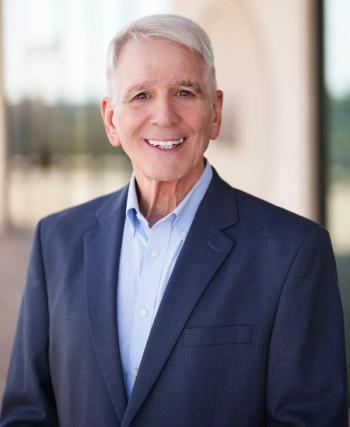
Leading during change: Tips for managed care executives
As a healthcare executive, leading your organization through today’s rapidly changing business environment means tackling serious issues. Here's how to do it right.
Over the last decade, no industry sector has gone through more seismic change than healthcare. As the Affordable Care Act continues to be implemented, it presents a new realm of challenges-and opportunities-for providers, payers and employer organizations.
Related:
McGrathAs a healthcare executive, leading your organization through today’s rapidly changing business environment means tackling issues like cost management, data security and protection in our new cyber-centric world, and even the challenges associated with “mobile medicine” Internet diagnoses and “do-it-yourself healthcare.”
In all probability, you’re seeing signs of “change fatigue” on your team in the face of this upheaval. Whenever people are forced to change, it’s human nature to focus first on how the change threatens us-psychologically, socially, economically. Your job is to communicate to people early and often through change, ultimately moving people from seeing it as less of a threat and more of an opportunity.
In a time of seismic change, how does your organization perceive you?
WeighartA leader’s ability to influence others is based on how he or she is perceived in three dimensions: character, substance, and style. Character is the core of who we are from the standpoint of values, dispositional tendencies, and essential beliefs; it is the most foundational level of the leader as a person.
Substance qualities are those we develop over time into our adult years that demonstrate our maturity and a capacity to integrate and bring our character and virtues into play as a leader. Style attributes are those iterative, timely, dialogical aspects of communication that drive execution and performance-the way we get work done through others.
Each of the three dimensions consists of five facets, reflecting the robust nature of what leaders need to get people aligned and drive business results. Here are the 15 facets:
How to identify your leadership gaps
When leading in times of seismic change, how you’re perceived by your organization can be especially critical. As your organization grows, faces greater complexity, and, at the same time, becomes more visible to larger groups of stakeholders, it isn’t unusual to underestimate the magnitude and urgency of projecting essential qualities of leadership.
Without awareness of your leadership "gaps" as well as a plan of attack to diminish them, it’s easy to get caught up in the “business of the business” and be left wondering why initiatives lag behind or fail.
Example
We worked with one healthcare executive who we will refer to as “Keith.” Keith was eager to push forward and was running at full tilt, spending a lot of time on the road assisting his salespeople as well as trying to help his internal employees who were struggling to adapt in an environment of constant change.
Keith flourished in the "character" dimension of leadership. His team clearly trusted him to do the right thing, and they were willing to go the extra mile for him. But, Keith did not perform as strongly in the intentionality facet of the style dimension.
Related:
Based on our understanding of his business context, we didn’t think that Keith lacked intentionality. Rather, the quality was failing to “come through” consistently for his stakeholders-kind of like trying to tune in a distant radio station with an erratic signal.
Keith wanted to rally people around exciting new opportunities, but he wasn’t effectively translating vision into real clarity or articulating the steps to make it happen.
This can be a common problem for today's healthcare executives. It's easy to become so focused on speeding your organization up that you forget to prioritize productive pauses.
Three tips for healthcare executives
Here are the three tips for healthcare executives who feel they may be in the same boat as Keith:
- Slow down to speed up. In times of seismic change, leaders can be tempted to drive a little too hard for results. To get people to embrace change, you need to hit the pause button and hear what your stakeholders are feeling and thinking. Take the time to sell the problem before you try to sell the solution, and be real with people about the fact that change initially represents threat and loss to people before they can see it as an opportunity for gain.
- Remember: dialogue is crucial to execution. Getting things done isn’t just about knowing what to do. You need to create a culture where people get focused and aligned by talking through who’s doing what and why. There needs to be dialogue to ensure that everyone continually sustains their focus and makes course correction on the road to effective execution.
- Remember that emotions are data, too. Some executives have a more cognitive, rational, data-driven focus and may need to develop their social-emotional skills. We sometimes remind such leaders that emotions are data, too. If they're not slowing down to notice what others are feeling-as expressed nonverbally as well as verbally-they may be unaware of real barriers that need to be overcome for their stakeholders to embrace change.
How to get great feedback from staff
Ask your employees for feedback regarding your leadership performance. This can provide helpful guidance and enable more productive conversations during times of change. Remember that feedback is most helpful when it can tie directly to action items and goals that tie directly to business imperatives. When gathering performance feedback:
Here are some final tips for healthcare executives looking to enhance their executive presence:
- Measure how your stakeholders perceive you in qualities of executive presence and influence such as confidence, assertiveness, humility, authenticity, vision, practical wisdom and appearance.
- Spend time and work up the courage to go back to your raters/stakeholders to better understand the feedback-and be open to observations.
- Remember that we don’t always convey what we intend; feedback can help you align your actions to change others' perceptions.
- Take comfort in the fact that all important qualities are amenable to change, and that investing in your development is a lifelong quest.
Meghan McGrath is a marketing and public relations associate for
Scott Weighart is director of learning and development at
Newsletter
Get the latest industry news, event updates, and more from Managed healthcare Executive.






















































